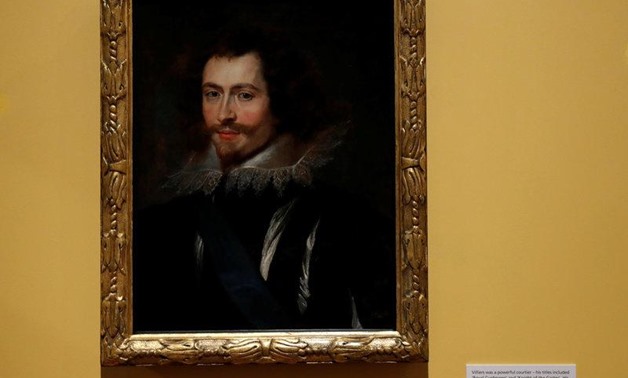
A lost Rubens masterpiece "George Villiers" goes on show at Kelvingrove Museum Glasgow, Scotland, Britain September 28, 2017. REUTERS/Russell Cheyne
GLASGOW, Scotland -29 September 2017:A lost portrait by Rubens of the charming but unpopular Duke of Buckingham, a lover of King James I of England, has been found after an art historian spotted telltale signs of the Flemish master’s hand under centuries of grime and overpainting.
Previously thought to be an inferior copy of a lost work by Peter Paul Rubens, the painting of the handsome bearded duke in a ruff lace collar and blue sash was identified at Pollok House, a mansion in the Scottish city of Glasgow.
The duke, whose name was George Villiers, was an elegant commoner who worked his way up to an aristocratic rank, stirring resentment and disdain among other courtiers. But he was so close to the 17th-century King James that he was given access to the monarch’s bedchamber via a secret passageway.
Now restored and authenticated as a genuine Rubens, the duke’s portrait goes on public view on Thursday at a Glasgow art gallery.
The work’s true identity was discovered by art expert Bendor Grosvenor, who noticed something special about the supposed copy while visiting the Pollok House art collection.
On close inspection, he spotted several features that were trademarks of Rubens’s technique, such as the minute scoring marks on the canvas to render the duke’s eyelashes.
“We know from Rubens’s posthumous inventory that a portrait of the duke existed, so the question was, is this it?” Grosvenor said, presenting the work to museum staff.
“We have investigated the history of the painting, we have analyzed it by infrared and x-ray and found all sorts of things that help build a case for the attribution and we have showed it to a leading Rubens expert, Ben van Beneden (...) His view is that this painting is indeed by Rubens.”
The portrait was used as a preliminary study for a grand equestrian portrait that Buckingham commissioned from Rubens in Paris. That painting, of the duke astride a rearing horse, was destroyed by fire in the 1940s but a sketch of it is in the Kimbell Art Museum in Texas.
The Flemish master, a savvy observer of court life, noted at the time Buckingham’s “arrogance and caprice.”
But King James declared before court that he loved Buckingham more than anyone else. In letters to the duke, James refers to himself as his “widow”, “dad” and “husband”.
After James’s death in 1625, Buckingham continued to enjoy royal favor but caused increasing public resentment for waging unsuccessful military campaigns in France and Spain. Three years later he was murdered by an war-wounded army officer.


Comments
Leave a Comment